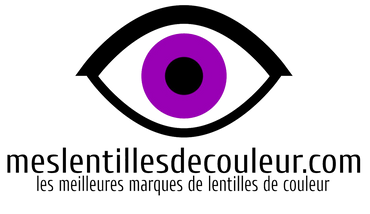
How to read your lens prescription?
My Contact Lens Prescription
When you receive a prescription for Contact Lenses, it can seem a little confusing at first glance, with many technical terms and abbreviations. However, understanding this information is essential to ensure you are wearing the right Contact Lenses and that your vision is properly corrected. In this article, we'll decipher the elements of a Contact Lens Prescription, explaining each parameter to help you choose the right Contact Lenses.
How to Read Your Lens Prescription: Power or Sphere (PWR / SPH) of the
The power, abbreviated as PWR(Power) orSPH(Sphere), is the first key element of your prescription. It indicates the degree of correction needed to correct your nearsightedness or farsightedness.
- If the number is negative, you are nearsighted (you have difficulty seeing far away).
- If the number is positive, you are farsighted (you have difficulty seeing up close).
This value is measured in diopters (D). The further the number is from zero, the stronger the vision correction.
- Example: A power of -3.00 means you are nearsighted and your lenses correct your vision by 3 diopters.
How to Read Your Contact Lens Prescription: Base Curve (BC)
TheBCorBase Curveis the base curve of theContact Lens, which determines how theContact Lensfits the surface of your eye. This number is usually between 8,0 and 9,5 mm.
- Example: BC 8.6 means the lens has a curvature of 8,6 mm.
The curvature is adjusted to the shape of your eye, and an improper fit could cause discomfort or vision problems. This parameter is particularly important to ensure that theContact Lensis properly positioned and comfortable on your eye.
How to Read Your Contact Lens Prescription:Diameter (DIA)
Thediameterof theContact Lens, abbreviated as DIA, is the size of the Contact Lens, measured in millimeters from edge to edge. This number is crucial for the lens to properly cover your cornea.
- Example: DIA 14.2 means the lens has a diameter of 14,2 mm.
An improper diameter could cause excessive movement of theContact Lenson the eye or, conversely, a too-snug fit, causing discomfort.
How to Read Your Contact Lens Prescription:Cylinder (CYL) and Axis (AXIS) for Astigmatism
If you have astigmatism, which is an irregularity in the shape of the cornea, your prescription will contain two additional parameters for Toric Lenses:
-
CYL (Cylinder): This value indicates the additional power required to correct astigmatism. As with the sphere power, it can be positive or negative. The further the value is from zero, the stronger the astigmatism correction.
-
AXIS (Axis): The axis is measured in degrees (from 0 to 180°) and indicates the orientation of the astigmatism correction. This is the direction in which the cylinder must be positioned to properly correct astigmatism.
-
Example: CYL -1.25 / AXIS 90 means you have astigmatism requiring a correction of -1,25 diopters, with the axis of the correction located at 90 degrees.
These two parameters are essential for those who wear toric lenses, which are Specially designed to correct astigmatism.
How to Read Your Contact Lens Prescription:Addition (ADD) for Multifocal Lenses
If you are presbyopic (often starting at age 40), you may needMultifocal Lensesto correct both near and long-sightedness. distance. In this case, the prescription will include a value called Addition or ADD.
-
ADDis a positive value, representing the power needed to correct near vision, in addition to the basic distance correction.
-
Example: ADD +1.50 means that an extra power of 1,50 diopters is added to help you read or see up close.
How to Read Your Contact Lens Prescription:Right Eye (OD) and Left Eye (OS)
A prescription for Contact Lenses differentiates the two eyes with the terms OD (Oculus Dexter for right eye) and OS (Oculus Sinister for left eye). Some people may have a different correction for each eye, so it's important to identify the lenses specifically for each eye.
- OD: Right eye.
- OS: Left eye.
Make sure you don't mix up the lenses, especially if the corrections are different for each eye, as this could affect your vision.
How to Read Your Contact Lens Prescription:Prescription Date and Renewal
Finally, the prescription will have aprescription date, which is important to know when you should see your eye doctor again for a new prescription. Contact lens prescriptions are generally valid for one year, and it's important to have your eyes checked regularly to ensure your contact lenses are still meeting your vision needs. Understanding the information on a contact lens prescription is essential. to ensure you are using the rightContact Lensesfor your needs. Every parameter, from power to curvature to diameter and, in some cases, astigmatism or presbyopia correction, plays a crucial role in the comfort and effectiveness ofContact Lenses. If you have any questions about your prescription, never hesitate to ask your ophthalmologist or optician for clarification.
